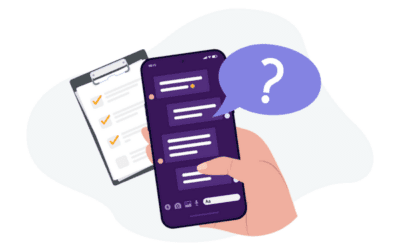On March 11th, the landscapes of the sports and tourism industries were significantly changed when the NBA suspended its season due to the Covid-19 pandemic. Other leagues soon followed as the next day, the NHL, the MLB, and the NCAA suspended their seasons as well. Tourism industries followed shortly after as all Smithsonian museums and the National Zoo officially closed their doors on March 14th. Within a matter of days, sports and tourism went from multi-billion dollar industries to basically non-existent.
After 3 long months of uncertainty, many states have finally given these industries the consent to begin planning to reopen their doors to the public, albeit with several restrictions. Although it seems that we may have passed the peak of the virus, it is not entirely behind us yet, so there are still many challenges that come with reopening doors to large groups of people while still preserving everyone’s health.
CREATING A CONTACTLESS ENVIRONMENT
One of the many, and more obvious, challenges is to create an environment with as little physical contact as possible. Sports leagues have already suggested that any games played in the near future will be completely fanless. While teams can still offer an at-home experience by broadcasting their games, it’s not as possible for tourism industries to replicate that experience.
Ultimately, both sports and tourism industries will reopen their doors to guests, even with limited capacity, and when they do so, it will be imperative to limit contact. Controlling the flow of traffic is one way to make sure that the amount of exposure that guests have to each other is restrained. Some museums are exploring the use of AI-powered virtual assistants to provide a personalized guided experience. Rather than allowing guests to control their own paths throughout the museum, the virtual assistant will direct them where to go, and can even provide insights about exhibits, and answer questions on-demand. Virtual assistants could also reduce for staff on the floor, further contributing to a limited capacity. Though some guests will still prefer in-person interactions, the assistant can allow visitors to choose how they want to experience the museum. With all this new technology, visitors will need much more pre-emptive communication from venues, including how to purchase and access digital tickets, whether they need to download an app, and if contactless payment systems will be used.
For stadiums, the area where teams are concerned with controlling traffic is the concourse. On any given moment during gameday, fans are walking aimlessly to get food or drinks, go to the bathroom, or even just to check out the stadium. The cluster of people walking next to each other in narrow pathways is an easy target for a pandemic. To limit the amount of time fans will need to leave their seats, teams have implemented food and beverage finders, telling fans where to get what they are looking for faster and in a more direct way. This will help avoid clustering, and subsequently reduce the spread of germs.
Some teams are exploring cashless concessions to both speed up the line and to reduce the spread of the virus that can be transmittable on cash, potentially following the model of the Atlanta Falcons who went fully cashless in 2019. There has also been more of a willingness to adopt newer technologies around mobile ordering, completely eliminating long lines of people standing right next to each other. Los Angeles Football Club (LAFC) have been pioneers in this space since they debuted their virtual assistant, named Olly, in 2018. By 2019, the Club expanded Olly’s capabilities onto Apple Business Chat, a new way for users to communicate directly with businesses using the Messages app on
iPhone. Through Apple Business Chat, the stadium added Satisfi Labs’ Order-Ahead feature which allowed fans to pre-order food and beverage directly in the chat flow and pick up their food at their convenience, ensuring customers never have to wait in line. Allowing for a contactless experience within a conversational channel.
GENERATING NEW REVENUE STREAM
Another difficult task to overcome, especially for stadiums that are going fanless for the immediate future, is the loss of in-stadium revenue. To put how much teams would lose in perspective, the NFL makes $5.5 billion in revenue from tickets, concessions, in-stadium sponsorship ads, parking, and team stores, or roughly 38% of the league’s total revenue. Teams must develop new revenue streams that can still be counted on even when fans are stuck at home.
Many teams are seizing on the opportunity to convert sponsorships from in-stadium displays onto messaging app assets. A Sponsor can now own the header ad that is displayed on top of a chat window which is available 24/7. Additionally, teams can sell sponsored answers to a widely asked and hyper-relevant question. Not only can teams promote their sponsors strategically through a virtual assistant that is already providing immense value, but they can also use it to promote their own merchandise, especially if fans can’t shop at team stores.
Similarly, corporate partnership and promotion are just as important to tourism locations. The Museum of Metropolitan Art, which relies heavily on its many corporate sponsors such as Bank of America, Louis Vuitton, and Morgan Stanley, offers several corporate membership levels with varying benefits, the most prestigious being the “Chairman’s Circle” which goes for $100,000. The virtual assistant presents a collective opportunity to highlight premier partnerships while also providing a high-touch experience to guests. Similarly to sports, less guests means less value for sponsors, so finding new ways to promote partnerships is crucial.
KEEPING GUESTS INFORMED
Ultimately, whatever new policies are implemented will not be successful without properly communicating them to guests. Imagine a fan being blindsided by a new policy that will extend the time it takes to get into the stadium, and now they’ve missed the first quarter. In this case, the team would be sure to face backlash. Creating efficient communication is essential to keeping fans safe while also preserving a positive experience for everyone. Guests will certainly have questions, however the sports and tourism industries were subject to widespread furloughs, including the Natural History Museum which cut about 450 employees.
The difficulty of answering every fan’s questions with reduced staffs will force these industries to turn to alternative communication methods, such as AI-enabled messaging assistants which can anticipate what questions fans are likely to ask and respond rapidly, accurately, and dynamically. Our data shows that the most popular searches since the pandemic have been about face masks, limited capacity, and general safety measures. AI-powered virtual assistants can also collect data concerning what information guests are not retaining in order to inform marketing and guest service departments and help these downsized teams improve their communication strategy.
The challenges and pressures that all organizations in the sports and tourism industries are facing right now are unlike anything they have ever seen before. Because of that, they must be proactive and creative in finding new solutions. Satisfi Labs is providing scalable solutions and valuable insights to our customers. Our goal is to help keep guests safe, informed, and engaged, whether they’re experiencing your brand at home or in-person.




